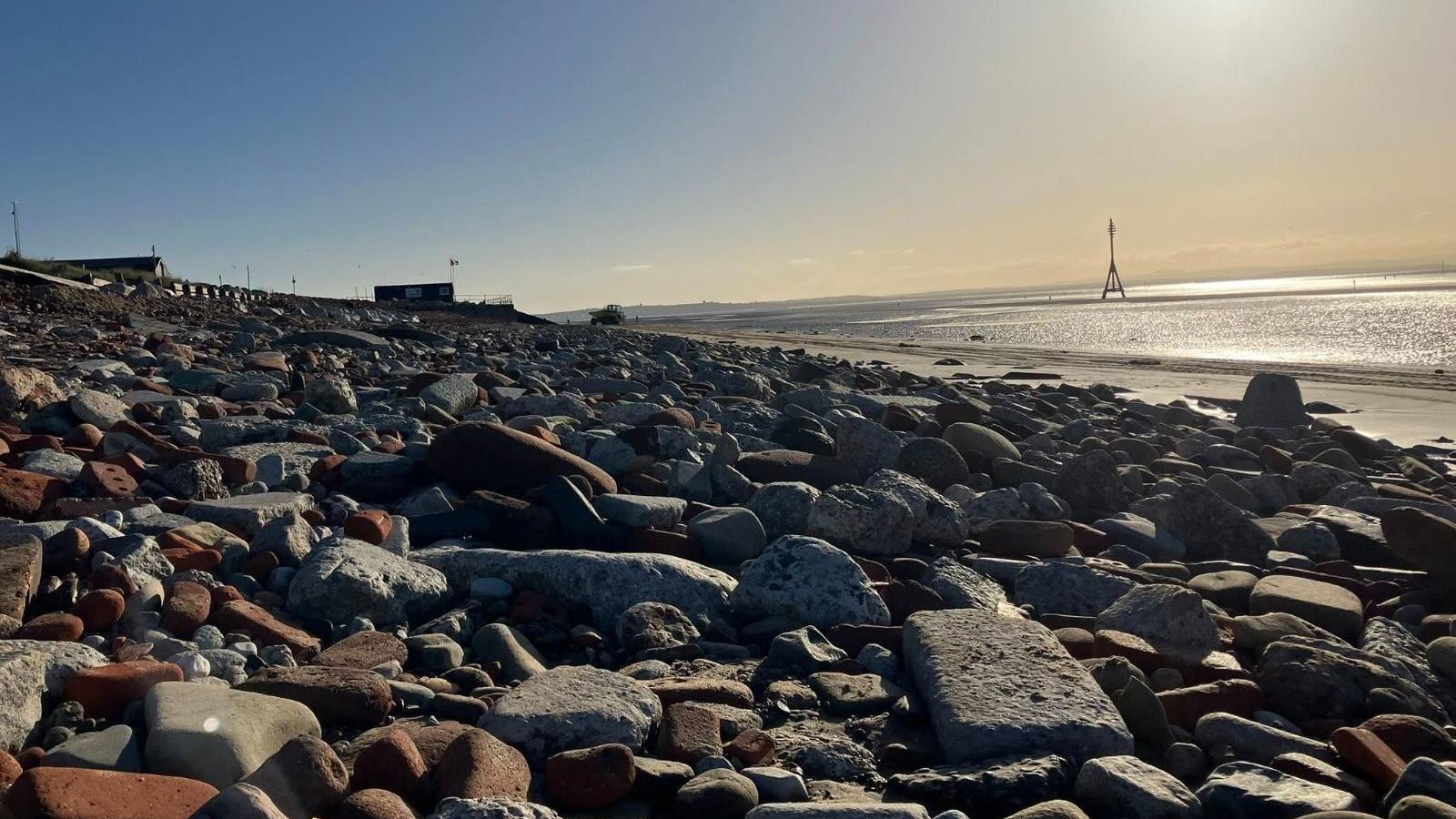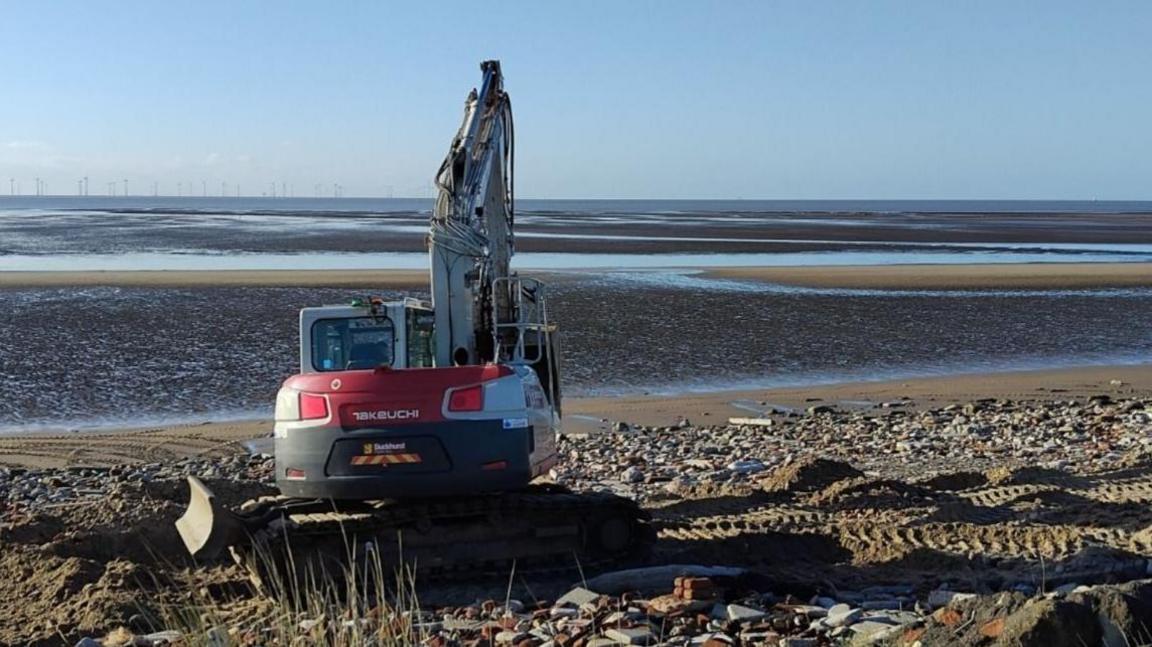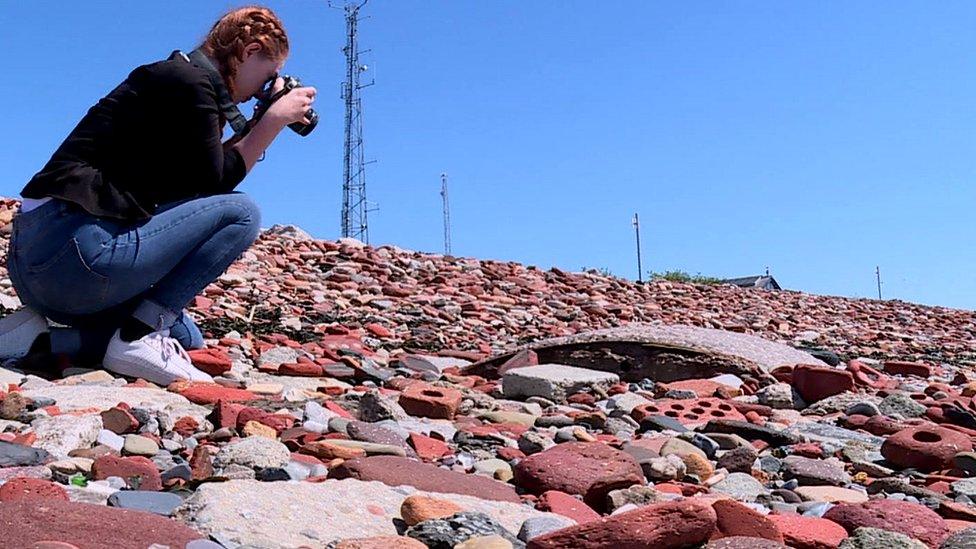'Blitz Beach' to be bolstered by 400 tons of rubble

Thousands of tons of rubble created during the Liverpool Blitz are used to bolster sea defences
- Published
Hundreds of tons of rubble scattered over the sands of Crosby will be relocated to an area of Merseyside coastline known as Blitz Beach.
The rubble was created during a devastating series of bombing raids on Liverpool by Nazi Germany's Luftwaffe between 1 and 7 May 1941.
Mountains of rubble were deposited on the so-called Blitz Beach site north of Hall Road in Blundellsands as part of previous moves to fight coastal erosion.
Now Sefton Council is working to move about 400 tons of it from elsewhere along Crosby Beach to further bolster coastal defences.
The Local Democracy Reporting Service (LDRS), external said that on a recent visit it found an array of wartime artefacts at the site, from piles of discarded masonry to the pillars of old buildings and ceramic tiles.
Liverpool was reportedly the most heavily bombed city outside of London during World War Two.
More than 4,000 people were killed or injured during the 1941 onslaught, with about 70,000 made homeless.

Rubble is being moved from elsewhere on Crosby Beach to boost sea defences
In 2022 archaeology student Emma Marsh started an online community to help identify the origin of thousands of pieces of debris that were dumped on Crosby Beach.
She said: "Trying to find records of what was placed on the beach is very difficult - you've got to think of the scale of the destruction.
"I don't think there was time to note where every little piece was going."
This week, local residents have been posting updates on social media as mechanical diggers and excavators pulled up and started the process of removing some of the rubble.
A Sefton Council spokesperson said: "With the help of a third-party contractor, we are removing approximately 400 tons of rubble from the beach and returning it to the Blitz Beach north of Hall Road.
"This has two benefits. One is to help prolong the life of the concrete sea defences, while the other is moving the rubble to a part of the coastline where it can act as a defence against erosion.
"The work has been carefully planned to limit disruption as much as possible."
Get in touch
Tell us which stories we should cover on Merseyside
Listen to the best of BBC Radio Merseyside on BBC Sounds and follow BBC Merseyside on Facebook, external, X, external, and Instagram, external, and watch BBC North West Tonight on BBC iPlayer.
Related topics
- Published5 October 2019
